Mario H. Castañeda Garcia
Multi-Environment based Meta-Learning with CSI Fingerprints for Radio Based Positioning
Oct 26, 2022Abstract:Radio based positioning of a user equipment (UE) based on deep learning (DL) methods using channel state information (CSI) fingerprints have shown promising results. DL models are able to capture complex properties embedded in the CSI about a particular environment and map UE's CSI to the UE's position. However, the CSI fingerprints and the DL models trained on such fingerprints are highly dependent on a particular propagation environment, which generally limits the transfer of knowledge of the DL models from one environment to another. In this paper, we propose a DL model consisting of two parts: the first part aims to learn environment independent features while the second part combines those features depending on the particular environment. To improve transfer learning, we propose a meta learning scheme for training the first part over multiple environments. We show that for positioning in a new environment, initializing a DL model with the meta learned environment independent function achieves higher UE positioning accuracy compared to regular transfer learning from one environment to the new environment, or compared to training the DL model from scratch with only fingerprints from the new environment. Our proposed scheme is able to create an environment independent function which can embed knowledge from multiple environments and more effectively learn from a new environment.
Reliable Deep Learning based Localization with CSI Fingerprints and Multiple Base Stations
Nov 23, 2021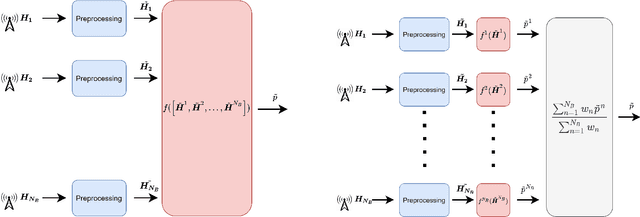
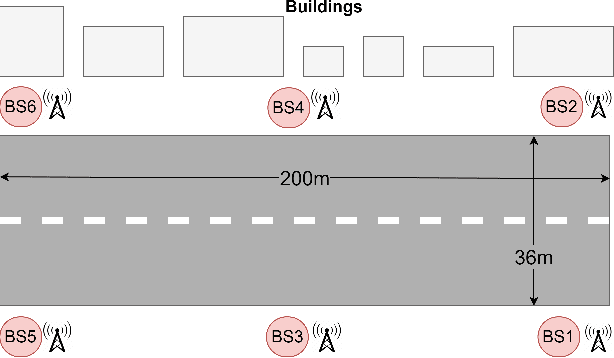
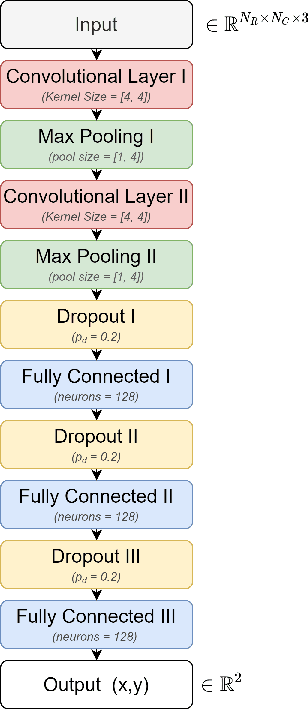
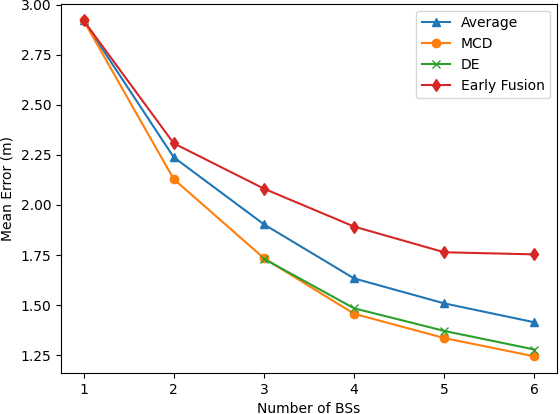
Abstract:Deep learning (DL) methods have been recently proposed for user equipment (UE) localization in wireless communication networks, based on the channel state information (CSI) between a UE and each base station (BS) in the uplink. With the CSI from the available BSs, UE localization can be performed in different ways. One the one hand, a single neural network (NN) can be trained for the UE localization by considering the CSI from all the available BSs as one overall fingerprint of the user's location. On the other hand, the CSI at each BS can be used to obtain an estimate of the UE's position with a separate NN at each BS, and then the position estimates of all BSs are combined to obtain an overall estimate of the UE position. In this work, we show that UE localization with the latter approach can achieve a higher positioning accuracy. We propose to consider the uncertainty in the UE localization at each BS, such that overall UE's position is determined by combining the position estimates of the different BSs based on the uncertainty at each BS. With this approach, a more reliable position estimate can be obtained in case of variations in the channel.
A Tutorial on 5G NR V2X Communications
Feb 08, 2021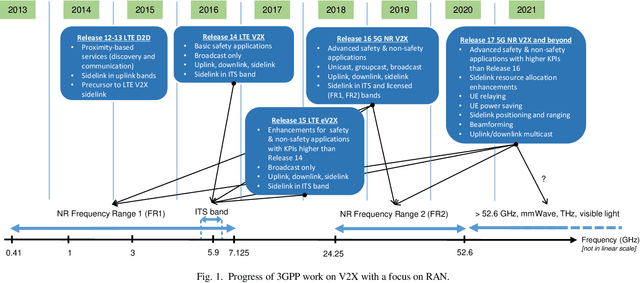
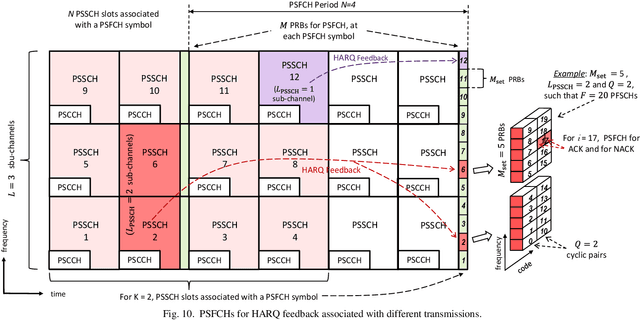
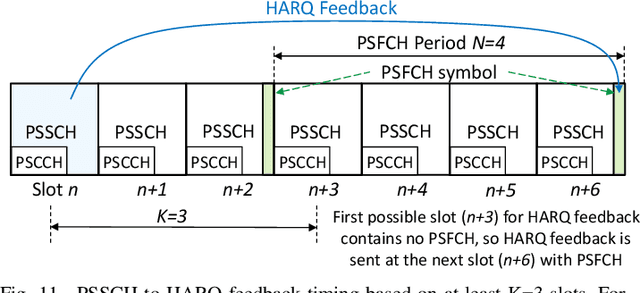
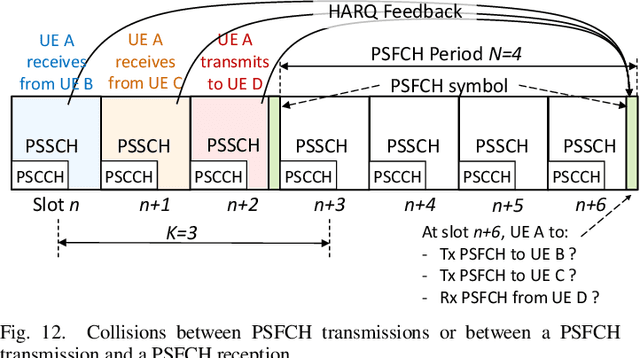
Abstract:The Third Generation Partnership Project (3GPP) has recently published its Release 16 that includes the first Vehicle to-Everything (V2X) standard based on the 5G New Radio (NR) air interface. 5G NR V2X introduces advanced functionalities on top of the 5G NR air interface to support connected and automated driving use cases with stringent requirements. This paper presents an in-depth tutorial of the 3GPP Release 16 5G NR V2X standard for V2X communications, with a particular focus on the sidelink, since it is the most significant part of 5G NR V2X. The main part of the paper is an in-depth treatment of the key aspects of 5G NR V2X: the physical layer, the resource allocation, the quality of service management, the enhancements introduced to the Uu interface and the mobility management for V2N (Vehicle to Network) communications, as well as the co-existence mechanisms between 5G NR V2X and LTE V2X. We also review the use cases, the system architecture, and describe the evaluation methodology and simulation assumptions for 5G NR V2X. Finally, we provide an outlook on possible 5G NR V2X enhancements, including those identified within Release 17.
CSI-Based Localization with CNNs Exploiting Phase Information
Jan 22, 2021



Abstract:In this paper we study the use of the Channel State Information (CSI) as fingerprint inputs of a Convolutional Neural Network (CNN) for localization. We examine whether the CSI can be used as a distinct fingerprint corresponding to a single position by considering the inconsistencies with its raw phase that cause the CSI to be unreliable. We propose two methods to produce reliable fingerprints including the phase information. Furthermore, we examine the structure of the CNN and more specifically the impact of pooling on the positioning performance, and show that pooling over the subcarriers can be more beneficial than over the antennas.
 Add to Chrome
Add to Chrome Add to Firefox
Add to Firefox Add to Edge
Add to Edge